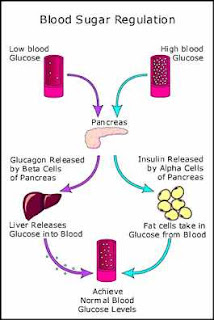 Hypothyroidism is a condition characterized by declining production of thyroid hormones. There are many diseases that in hypothyroidism. These disorders may directly or indirectly related to the thyroid. Since thyroid hormones affect growth, development, and many cellular processes, inadequate thyroid hormone has widespread consequences for the organism.
Hypothyroidism is a condition characterized by declining production of thyroid hormones. There are many diseases that in hypothyroidism. These disorders may directly or indirectly related to the thyroid. Since thyroid hormones affect growth, development, and many cellular processes, inadequate thyroid hormone has widespread consequences for the organism.
This article focuses specifically on hypothyroidism in adults.
What are thyroid hormones?
Thyroid hormones are produced in the thyroid gland. This gland is located at the bottom of the neck below the Adam's Apple. Gland wraps around the trachea (trachea) and has the shape of a butterfly - is made up of two wings (lobes), and from the middle part (isthmus).
The thyroid gland uses iodine (mostly of food in the diet, such as fish, bread and salt) to produce thyroid hormones. The two main thyroid hormones thyroxine (T4) and triiodothyronine (T3), 99% and 1% of thyroid hormones in the blood, respectively. However, the more hormone with biological activity is T3. When the thyroid gland in the blood, a large number of T4 becomes T3 - the active hormones, metabolism in cells
Read more...
Evaluation of a new measure of variability of blood glucose in patients with diabetes mellitus
Posted by dede | 1:55 PM | System Endokrin
1. Boris P. Kovatchev, PHD1,
2. Erik Otto, MBA2,
3. Daniel Cox, PHD1,
4. Linda Gonder-Frederick, PHD1 and
5. William Clarke, MD1
OBJECTIVE-Recent studies show the importance of controlling blood glucose variability in terms of reducing hypoglycemia and attenuating the risk of cardiovascular complications and behavioral disorders due to hyperglycemia. It is therefore important to develop measures of variability that equally predict low and high glycemic excursions.
RESEARCH DESIGN AND METHODS-We present an average daily risk range (ADRR), rate variability in normal self-blood glucose (SMBG) data. In ADRR comes with a database of 39 and 31 adults with type 1 and type 2 diabetes. This formula is, and ADRR compared with other measures of variability in the independent verification of data in ~ 4 months of SMBG for 254 and 81 adults with type 1 and type 2 diabetes.
The results of 1 month of confirmation of SMBG data, we estimate ADRR, SD of blood glucose and the coefficient of variation, daily blood glucose range and interquartile range, the amplitude of glycemic excursion, the M-value, and lability index. Then all measures were examined as predictors of low blood glucose levels (<2.2> 10 mmol / L,> 22.2 mmol / l) in the following events: from 3 -- x months ago. In ADRR is the best predictor for hypoglycemia and hyperglycemia, an increase of 6 times greater risk of hypoglycemia, and 3.5 times higher risk of hyperglycemia their risk.
CONCLUSIONS In a large database of the APS, the ADRR showed a strong association with subsequent out of control glucose readings. Variability in relation to other actions that ADRR showed excellent balance of sensitivity to predicting both hypoglycemia and hyperglycemia. This forecast does not depend on the type of diabetes.
Source : http://care.diabetesjournals.org
Read more...
The following article covers a topic that has recently moved to center stage--at least it seems that way. If you've been thinking you need to know more about it, here's your opportunity.
If you base what you do on inaccurate information, you might be unpleasantly surprised by the consequences. Make sure you get the whole Hemostasis story from informed sources.
Damage to small blood vessels and capillaries frequently occurs. When these vessels are damaged, there are three basic mechanisms that promote hemostasis or the stoppage of bleeding.
Following damage, there is an immediate reflex that promotes vasoconstriction, thus diminishing blood loss. Exposed collagen from the damaged site will promote the platelets to adhere.
When platelets adhere to the damaged vessel, they undergo degranulation and release cytoplasmic granules, which contain serotonin, a vasoconstrictor, and ADP and Thromboxane A2.
The ADP attracts more platelets to the area, and the thromboxane A2 promotes platelet aggregation, degranulation, and vasoconstriction. Thus ADP and thromboxane A2 promote more platelet adhesion and therefore more ADP and thromboxane. The positive feedback promotes the formation of a platelet plug.
The final hemostatic mechanism is coagulation.
Damaged tissue releases factor III, which with the aid of Ca++ will activate factor VII, thus initiating the extrinsic mechanism. Factor XII from active platelets will activate factor XI, thus initiating the intrinsic mechanism.
Both active factor VII and active factor XI will promote cascade reactions, eventually activating factor X.
Active factor X, along with factor III, factor V, Ca++, and platelet thromboplastic factor (PF3), will activate prothrombin activator.
Prothrombin activator converts prothrombin to thrombin.
Thrombin converts fibrinogen to fibrin.
Fibrin initially forms a loose mesh, but then factor XIII causes the formation of covalent cross links, which convert fibrin to a dense aggregation of fibers. Platelets and red blood cells become caught in this mesh of fiber, thus the formation of a blood clot.
Don't limit yourself by refusing to learn the details about Hemostasis. The more you know, the easier it will be to focus on what's important.
Source : http://www.mhhe.com
Read more...
